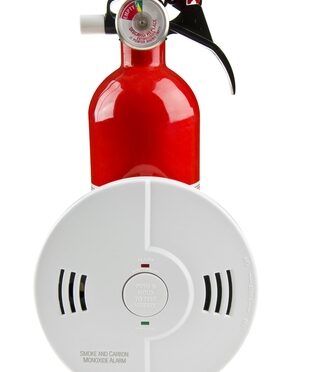
A proper fire protection plan starts with establishing preventative measures to enforce in the workplace. With a variety of hazardous chemicals and substances in the industrial sector that could cause fires or explode, employers should minimize facility damage and potential for employee harm with a comprehensive fire protection plan.
According to the National Fire Protection Association, the authority on fire, electrical and building safety, there were an estimated 118,000 non-home structure fires in 2013, resulting in $2.7 billion worth of damage. There was also 100 fatalities and 1,875 injuries among civilians in the same year.
Since there is a high risk of business interruption and worker injury or deaths from fires, employers should have certain key elements in their occupational safety program to address these problems.
The U.S. Occupational Safety and Health Administration encourages employers to establish fire protection procedures that will help reduce fire and explosion hazards and lower the chance of employee harm.
"Stop the three elements of the fire triangle."
Procedures to Control Ignition Sources
OSHA's fire prevention recommendations will help stop the three elements of the fire triangle from happening at once, which could cause a fire or explosion.
Controlling potential ignition sources is crucial and employers should be on the look out for the following:
- Flammable or combustible liquids
- Static electricity
- Lit cigarettes
- Torches and torch-applied materials
Employers should implement their fire prevention plan to account for these ignition sources, such as putting flammable or combustible liquids in safety cans or containers.
Another common risk in the workplace is the presence of combustible dust. Not only is combustible dust found in several industries – from wood to agriculture – the small particles that make up this material may be difficult to detect. When combined with an ignition source and other factors, this dust may catch fire or explode.
Fire Extinguishers That Are Easily Accessible
To effectively lower the chance of significant damage due to fire, employers should put fire extinguishers where they are easily accessible. OSHA recommends placing one or more fire extinguishers on each floor and at least one extinguisher adjacent to the stairway for multistory structures. The fire extinguishers should be rated 2A or above.
Depending on the probability of a fire, employers may have to put fire extinguishers closer to at-risk work areas. When there are more than five gallons of flammable or combustible liquids or five pounds of flammable gas at a jobsite, companies should position a fire extinguisher within 50 feet of this material, according to OSHA.
Maintenance for Fire Alarm Systems and Firefighting Equipment
Following the NFPA's Maintenance and Use of Portable Fire Extinguishers, OSHA stated that portable fire extinguishers will have to be inspected on a regular basis and maintained if necessary.
Educate workers on how to recognize warning labels or signs that indicate that materials, areas of the workplace or other hazards increase the risk for fires. Employees should be aware of which dangerous or flammable chemicals they are handling, their negative health effects and how to properly handle, transport or use these substances to carefully avoid fires.








